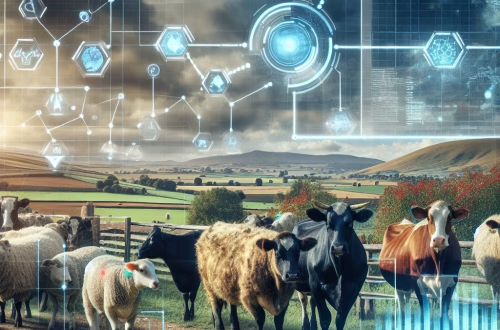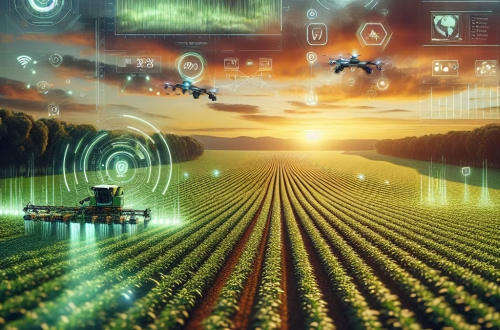Optimizing AI Models for Automated Patent Analysis in Intellectual Property Management
Summary: AI-powered patent analysis transforms intellectual property management by automating prior art searches, claim mapping, and infringement risk assessment. This article explores technical implementation strategies for deploying transformer-based models like GPT-4o and Claude 3 in patent workflows, focusing on document preprocessing, semantic search optimization, and fine-tuning considerations. We examine specific challenges in handling technical jargon, legal phrasing, and multimodal patent documents while maintaining audit trails for legal defensibility. The implementation framework balances automation accuracy with human oversight requirements critical for IP teams.
What This Means for You:
Practical implication: Legal teams can reduce patent clearance search time by 60-80% using properly configured AI models, but require specialized prompt engineering to handle technical claim language accurately.
Implementation challenge: Patent documents demand multi-stage processing pipelines combining OCR cleansing, term normalization, and hierarchical attention mechanisms to extract relevant technical concepts from claims and diagrams.
Business impact: Corporate legal departments adopting AI patent tools report 35-50% cost reduction in IP portfolio management, with the highest ROI coming from automated invention disclosure classification systems.
Future outlook: Emerging regulatory scrutiny of AI-assisted patent filings requires implementers to maintain detailed model lineage documentation and human verification protocols to satisfy patent office requirements.
Understanding the Core Technical Challenge
Patent analysis presents unique AI implementation challenges that generic document processing systems cannot address. The technical specification language, legal claim structures, and combined text/diagram content require specialized model architectures. Conventional NLP models struggle with patent-specific constructs like Markush groupings (chemical compound formulations) or means-plus-function claim language. Effective solutions must combine domain-specific pretraining with modular processing pipelines that maintain chain-of-custody documentation for legal proceedings.
Technical Implementation and Process
Building an AI patent analysis system requires three core technical components:
- Document Ingestion Pipeline: Handles PDF-to-text conversion with layout awareness, extracting claims, descriptions, and figures into structured JSON. Must preserve chemical formulas, mathematical notations, and diagram annotations.
- Semantic Search Layer: Implements hybrid retrieval combining keyword matching (for precise terms) with vector embeddings (for conceptual similarity) using models fine-tuned on patent corpora.
- Analysis Modules: Domain-specific classifiers for novelty assessment, claim-chart generation, and infringement risk scoring, typically implemented as separate microservices for auditability.
Specific Implementation Issues and Solutions
Issue: Handling ambiguous claim language: Patent claims often use broad terminology requiring contextual interpretation. Solution: Implement claim decomposition algorithms that first identify independent/dependent claim relationships, then apply constraint propagation through the document.
Related technical challenge: Cross-lingual prior art search requires maintaining conceptual equivalence across patent offices. Solution: Train multilingual embeddings on parallel patent filings from WIPO datasets rather than general-domain translation models.
Performance optimization: Real-time infringement checking against large portfolios demands efficient nearest-neighbor search. Solution: Use hierarchical navigable small world (HNSW) indexes with product quantization to enable billion-scale vector searches on commodity hardware.
Best Practices for Deployment
- Maintain human-in-the-loop validation points for critical decisions like novelty assessments
- Implement version-controlled model registries to track algorithm changes affecting analysis results
- Use separate processing pipelines for chemical, mechanical, and software patents due to domain-specific parsing requirements
- Deploy attention visualization tools to explain why documents were flagged as relevant
- Establish redaction protocols for sensitive material before submitting documents to cloud-based AI services
Conclusion
AI-powered patent management systems deliver transformative efficiency gains when properly implemented with domain-specific adaptations. Success requires moving beyond off-the-shelf NLP tools to create specialized processing pipelines that handle technical documentation’s unique characteristics. Legal teams should prioritize solutions offering transparent decision pathways and seamless integration with existing IP management systems.
People Also Ask About:
How accurate are AI tools for patent prior art searches? Top systems achieve 85-92% recall rates on curated test sets, but require iterative query refinement and benefit from boolean search hybridization to reach production-grade accuracy.
What hardware requirements exist for local AI patent analysis? Local deployment of mid-range models typically requires GPUs with 24GB+ VRAM for acceptable throughput, making cloud solutions preferable for most firms without dedicated AI infrastructure.
Can AI generate patent claims? While capable of drafting claim-like text, current models lack the precision for production use without extensive attorney review due to potential claim scope ambiguities and precedential nuances.
How to evaluate AI patent tools for legal defensibility? Seek solutions providing detailed relevance scoring explanations, version-controlled analysis methodologies, and audit trails meeting Daubert standards for expert testimony.
Expert Opinion
Deploying AI in patent workflows requires balancing automation benefits with legal risk management. The most successful implementations use narrowly-scoped models for specific sub-tasks rather than end-to-end automation. IP teams should insist on tools that generate standards-compliant documents for patent office submission rather than just internal analysis. Emerging best practices suggest maintaining parallel manual processes for critical filings until AI systems demonstrate >95% reliability on firm-specific patent typology.
Extra Information
- USPTO AI Patent Policy Guidelines – Official framework for AI-assisted patent examination procedures
- Google Patents – Valuable dataset for training custom patent analysis models
- WIPO PatentScope – Multilingual patent database for cross-jurisdictional training data
Related Key Terms
- AI-powered patent claim mapping techniques
- Fine-tuning LLMs for technical documentation analysis
- Automated patent infringement detection systems
- Semantic search implementation for prior art discovery
- Multimodal processing for patent diagrams and text
- Legal compliance in AI-assisted IP management
- Hybrid human-AI patent review workflows
Check out our AI Model Comparison Tool here: AI Model Comparison Tool
*Featured image generated by Dall-E 3




